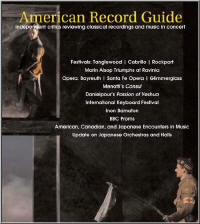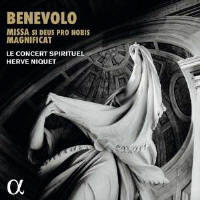Texte paru dans: / Appeared in: |
|
|
Outil de traduction ~ (Très approximatif) |
|
|
Reviewer: William
J. Gatens
Orazio Benevolo (1605-1672)
was an important figure in Roman church music in the 17th
Century, highly esteemed by his contemporaries. He was born in Rome, the son
of a confectioner from Lorraine who italianized his surname from Venuout. He
held several musical positions in Roman churches before a sojourn (1644-46)
as Kapellmeister to the Hapsburg court of Archduke Leopold Wilhelm
in Vienna. On his return to Rome he
served briefly as maestro di cappella at Santa Maria Maggiore before his
appointment in the autumn of that year to the highly position of choirmaster
of the Cappella Giulia at St Peter’s - a position he retained to the end of
his life. Benevolo was a celebrated exponent of polychoral composition, most often associated with Venice but soon appropriated by Rome. The Mass Si Deus pro Nobis, thought to date from 1660, is for 16 voices deployed in 4 choirs, each with its instrumental ensemble. The Magnificat recorded here is also for 16 voices. It is one of 12 settings by Benevolo ranging from 8 to 24 voices. The motet ‘Regna Terrae’ is for 12 treble voices in 6 choirs of two voices each. As one might guess, this is music of imposing grandeur: massive blocks of sound are combined and juxtaposed. On the whole, the musical gestures are broad, the harmonic rhythm is slow, and the music is often repetitious, as phrases are tossed from choir to choir. There are some welcome contrasting sections with fewer voices and more active part writing.
above them seems to emerge from a dark cloud.
I recently reviewed another recording of a 16-part Benevolo Mass: In Angustia Pestilentiae performed by the Cappella Musicale di Santa Maria in Campitelli directed by Vincenzo Di Betta (Tactus 600201; Sept/Oct 2018). In that recording the sound is brilliant and clear so that one can really hear the music. I would not describe that performance as subtly nuanced, and Di Betta’s musicians are not nearly as polished as Niquet’s, but the effect is better.
| |
|
|
|
|
Cliquez l'un ou l'autre
bouton pour découvrir bien d'autres critiques de CD |
|




